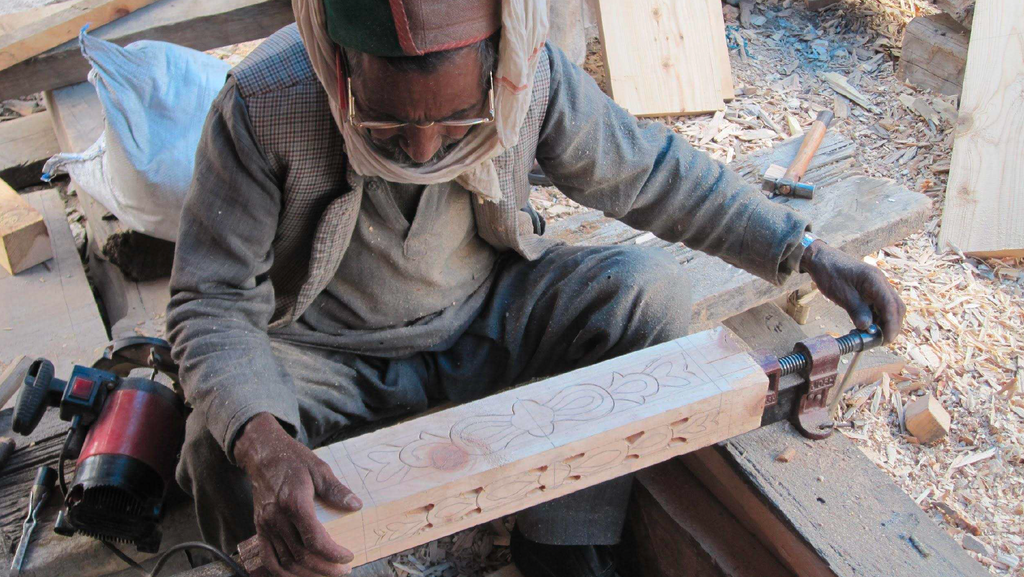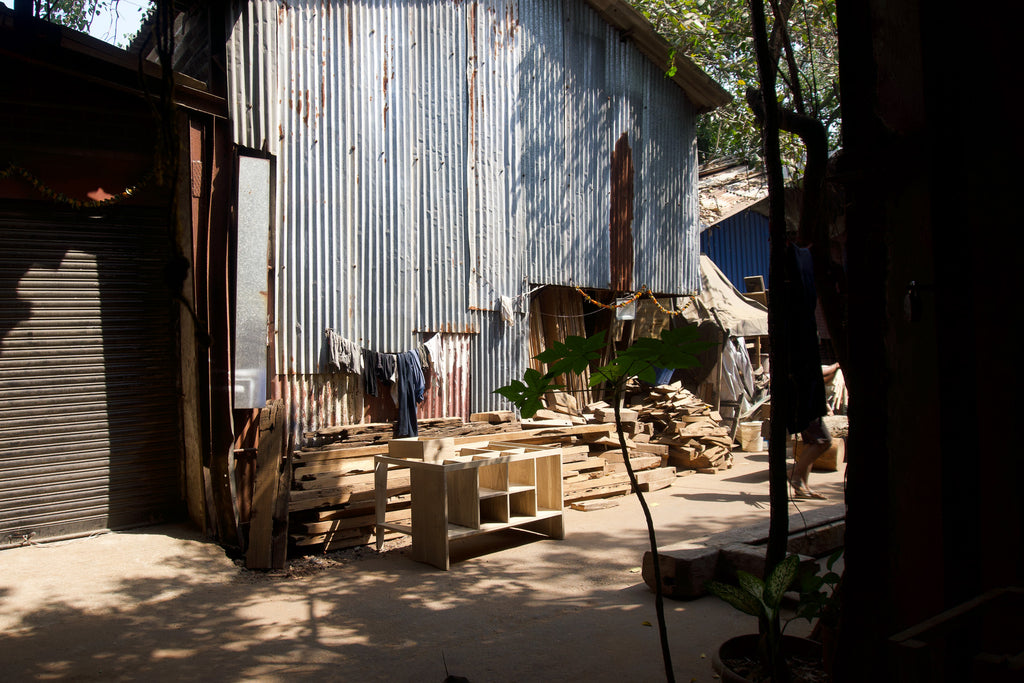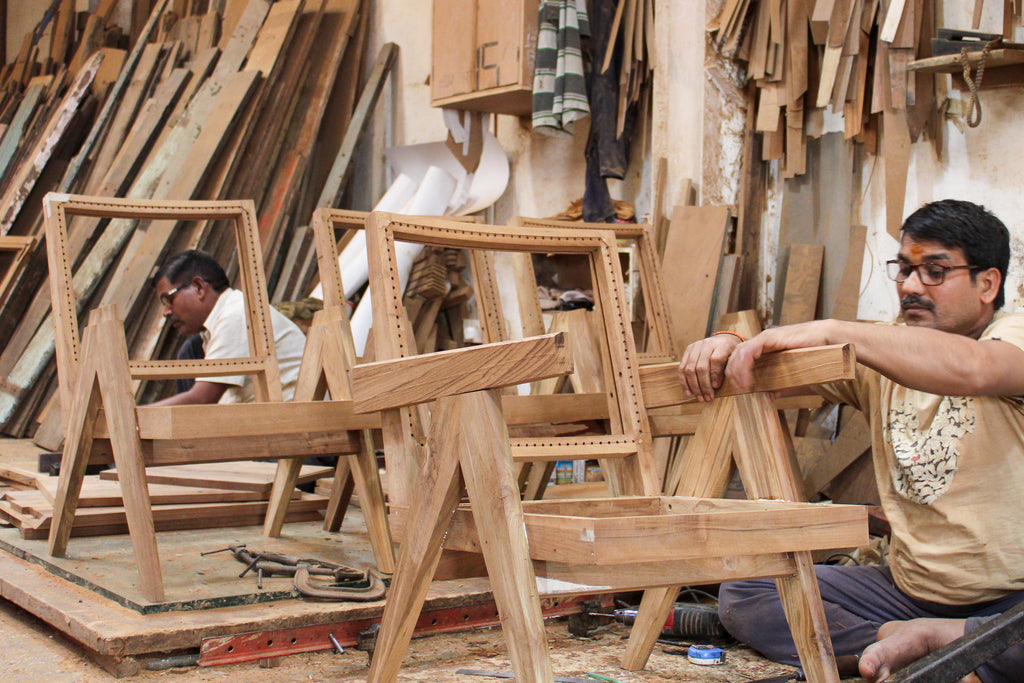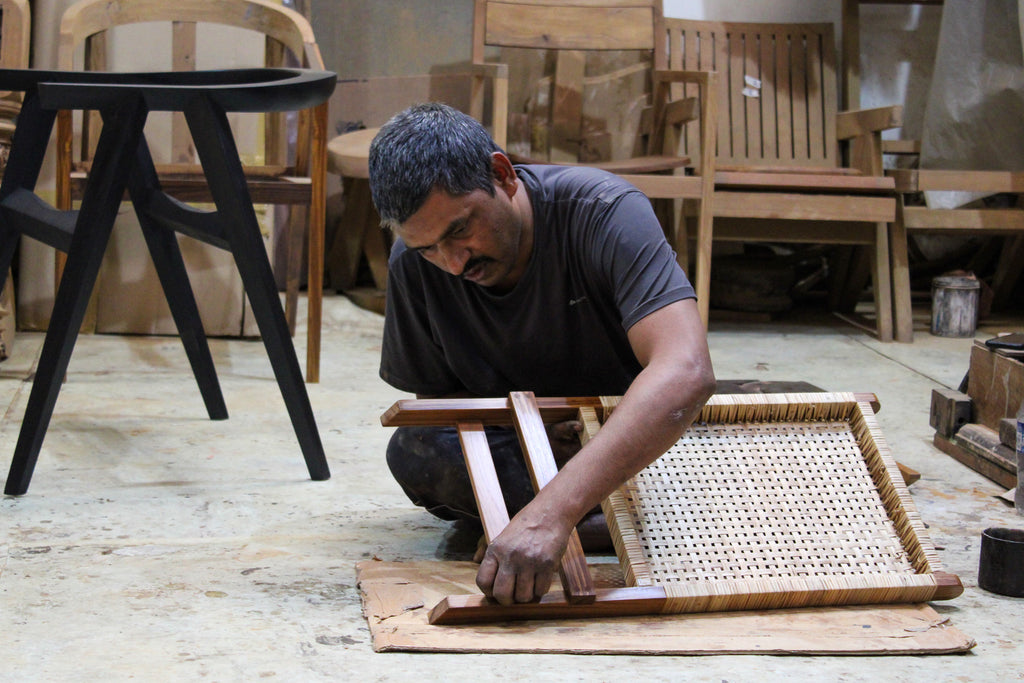The History and Process of Traditional Indian Woodworking Techniques
India has a rich heritage of traditional woodworking that is built on centuries of unparalleled craftsmanship passed down through generations. At Studio Botanica, we strive to continue the journey and advocate to keep an age-old tradition alive.
For centuries, India has been renowned for its exceptional craftsmanship in woodworking, a tradition marked by the unparalleled skill of its artisans, passed from one generation to the next. This craft has not only played a pivotal role in shaping the nation's history and culture but has also stood as a testament to the ingenuity and artistry of its people. In this blog post, we delve into the intricate history and processes of traditional Indian woodworking techniques, celebrating a cultural treasure with a rich heritage that continues to thrive and influence furniture design to this day.

Traditional Indian wooden architecture. Photo: Jay Thakkar, 2016.
Timber and Tradition: The Enduring Journey of Woodworking in India
India has a long woodworking history, dating back to ancient times. The Indus Valley Civilization, which existed from 3300 BCE to 1300 BCE, used wood to build tools and carve out ornate sculptures. During the Mughal period, Indian artisans produced intricate wooden carvings and designs that would, in turn, result in wooden carvings becoming an art form – with artisans producing some of the most exquisite wooden furniture pieces sought after and celebrated today.

Traditional Indian wood mosaic and fretwork. Photo: Jay Thakkar, 2016.
From Tree to Treasure: The Art of Traditional Indian Woodworking
Traditional woodworking techniques in India involve using hand tools with natural materials. The artisans used chisels, saws, and axes to shape the wood into the desired form, and they often used traditional joinery methods. They have been used for centuries in woodworking to create sturdy and long-lasting furniture, structures, and unique wooden handicrafts.

Traditional Indian wooden furniture. Photo: Jay Thakkar, 2016.
Central to traditional Indian woodworking are the age-old joinery techniques passed down through generations. Mortise and tenon joints, with their unparalleled strength and durability, are a hallmark of this craft. These joints, others like dovetails and finger joints, create connections that are as beautiful as they are functional without the need for nails or screws.
At the core of traditional Indian woodworking is a deep respect for natural materials. Craftsmen begin by carefully selecting the perfect wood for their project, considering factors such as the timber’s grain, unique form, and age.

Method of production - onsite. Photo: Jay Thakkar, 2016.
As the piece nears completion, the craftsman focuses on the finishing touches. Natural materials like beeswax, shellac, and linseed oil are applied to protect the wood and enhance its natural beauty.
Holding the Chisel of Time: Studio Botanica's Commitment to India's Woodworking Legacy
Despite the rise of modern woodworking techniques and machinery, traditional woodworking techniques in India are still alive and well. Many craftspersons are still practicing these techniques, passing them down to the next generation in many woodworking communities across the continent. However, there is a concern that these techniques may be lost over time as the aspirations of the next generations change and fewer people are interested in learning these age-old skills.

Traditional Indian wooden architecture. Photo: Jay Thakkar, 2016.
This shift can be attributed to a combination of societal, economic, and environmental factors reshaping the landscape of traditional crafts. With the allure of high-paying jobs in technology, finance, and entrepreneurship, fewer young people consider woodworking a viable career option. As a result, the pressure to pursue a career in services often overshadows the appeal of mastering a traditional craft.

One of our carpenters carefully sanding a teak wood frame at the workshop in Mumbai. Photo: Studio Botanica, 2023.
At Studio Botanica, we deeply respect the rich history of traditional woodworking in India, a tradition that is close to our hearts. Many of our carpenters have been following their profession for decades, their connection to woodworking beginning in childhood as they observed and learned from older family members. This hands-on heritage is something we hold dear and seek to honor in every piece we create.

A Pierre Jeanneret File Rack enjoying some sunshine at the workshop in Mumbai. Photo: Studio Botanica, 2023.
We understand the importance of dedication, skill, and attention to detail in our craft. Our approach is simple and grounded: we focus on the quality and uniqueness of handmade furniture. It's our way of keeping the tradition alive and sharing the beauty of skilled craftsmanship with others.

Pierre Jeanneret Easy Chairs being assembled before being sanded and polished. Photo: Studio Botanica, 2023.
We believe in producing high-quality furniture with timeless designs that can be cherished and passed on to the next generations rather than following fleeting trends and constantly replacing items. This, to us, is what great craftsmanship is all about – creating something meaningful, durable, and beyond the ordinary, with respect for the past and hope for the future.
Indian Woodworking: A Testament to Centuries of Cultural Mastery
In conclusion, the journey of woodworking in India is a testament to the nation's rich cultural tapestry and its deep-rooted history in craftsmanship. From the ancient techniques honed during the Indus Valley Civilization to the intricate artistic expressions of the Mughal era, Indian woodworking has evolved while maintaining its core principles and aesthetic values. The traditional techniques, characterized by natural materials and age-old joinery, continue to inspire a sense of wonder and respect for the natural world.

One of our polishers lovingly applies lacquer on a prototype chair. Photo: Studio Botanica, 2023.
Studio Botanica is committed to preserving the priceless history, tradition and art of Indian woodworking. By valuing the old while embracing the new, we strive to ensure that a cherished craft not only survives but thrives, inspiring future generations to appreciate the beauty and craftsmanship of traditional Indian woodworking. In a world increasingly dominated by transient trends and disposable products, the dedication to creating durable, meaningful, sustainable, and beautifully made furniture represents a vital link to India's past and a hopeful vision for preserving the craft’s future.
Follow Studio Botanica's journey for more behind the scenes insights on Instagram.
